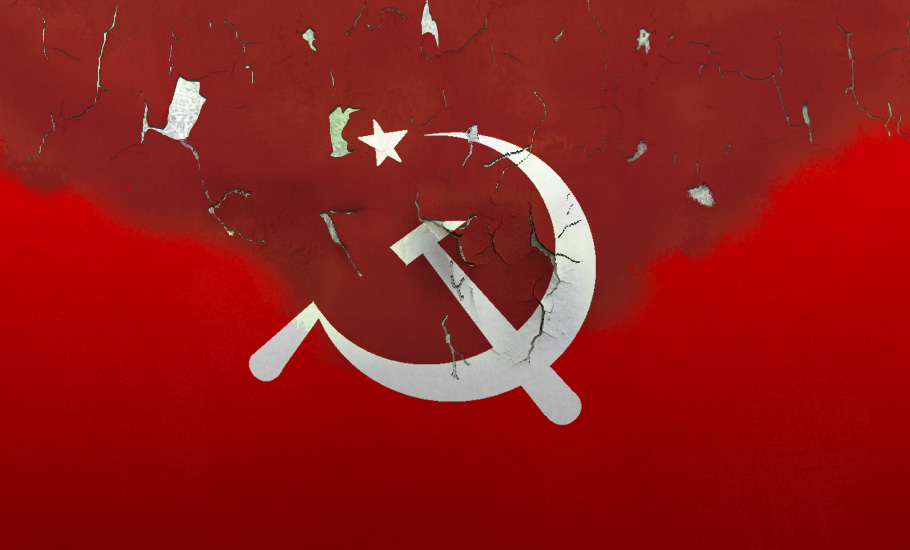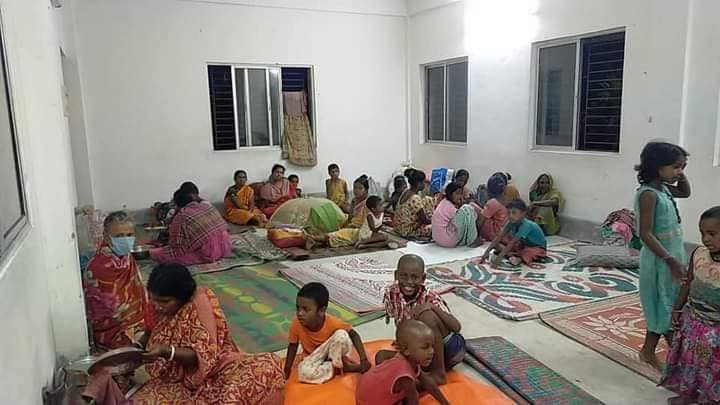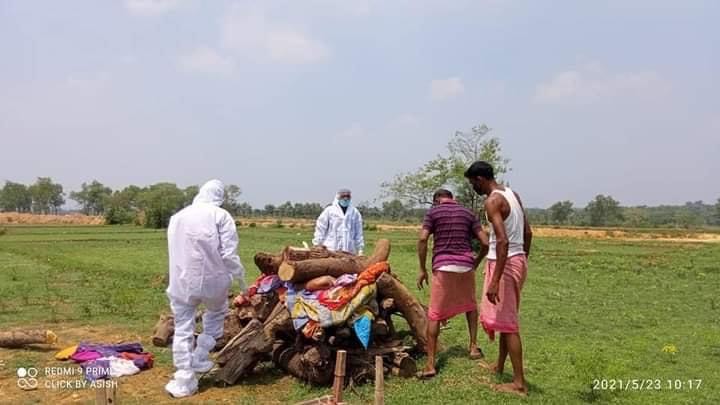
- Home
- News
- Analysis
- States
- Perspective
- Videos
- Education
- Entertainment
- Elections
- World Cup 2023
- Features
- Health
- Business
- Series
- Economy Series
- Earth Day
- Kashmir’s Frozen Turbulence
- India@75
- The legend of Ramjanmabhoomi
- Liberalisation@30
- How to tame a dragon
- Celebrating biodiversity
- Farm Matters
- 50 days of solitude
- Bringing Migrants Home
- Budget 2020
- Jharkhand Votes
- The Federal Investigates
- The Federal Impact
- Vanishing Sand
- Gandhi @ 150
- Andhra Today
- Field report
- Operation Gulmarg
- Pandemic @1 Mn in India
- The Federal Year-End
- The Zero Year
- Premium
- Science
- Brand studio
- Home
- NewsNews
- Analysis
- StatesStates
- PerspectivePerspective
- VideosVideos
- Entertainment
- ElectionsElections
- Sports
- Loading...
Sports - Features
- BusinessBusiness
- Premium
- Loading...
Premium

Bengal: How Left's failure to evolve negates the strong presence of cadres on the ground
A resurgence of the Left in Bengal will only be possible if it resets its political priorities, acknowledging social diversity beyond the binary of rich and poor.

Sixty-seven-year old BJP legislator Parthasarathi Chatterjee was gasping for breath on the afternoon of May 16, a few weeks after the election results were announced. His oxygen level began to drop after developing Covid-19-like symptoms. A doctor advised immediate oxygen support and hospitalisation. However, amid this raging pandemic, oxygen has been precariously in short supply. Family...
Sixty-seven-year old BJP legislator Parthasarathi Chatterjee was gasping for breath on the afternoon of May 16, a few weeks after the election results were announced.
His oxygen level began to drop after developing Covid-19-like symptoms. A doctor advised immediate oxygen support and hospitalisation.
However, amid this raging pandemic, oxygen has been precariously in short supply. Family and party colleagues of the newly elected MLA from Ranaghat Northwest in Nadia district made frantic attempts in vain to arrange an oxygen cylinder.
When all cries for help went unanswered, an aide of the BJP MLA hesitantly dialled the Ranaghat helpline number of Red Volunteers—an initiative of the CPI(M), the BJP’s political and ideological arch enemy.
These youths were pulling out all stops barely a month ago to defeat Chatterjee in the bitterly contested elections. But setting aside the political rivalry, the Red Volunteers (RVs) rushed in to help without any political prejudice.
The call was made around 1.30pm and by 2pm a team of CPM’s student and youth wings was at the residence of the BJP leader with an oxygen cylinder. Within another few minutes they brought an ambulance to whizz the ailing legislator off to a private hospital in Kolkata.
The timely help saved Chatterjee’s life. Expectedly, he is now all praise for his political rivals.
The same group of volunteers rushed in with oxygen at around midnight on May 19 to save the life of Swati Das, wife of Sadhan Das, an influential Trinamool Congress leader of the area.
These are not isolated incidents. There are countless stories coming from across the state about these volunteers breaching the gap between demand and supply in services needed for COVID-19 patients.
It was the RVs who came to the aid of Sutopa Roy from Rajpur, on the outskirts of Kolkata, when she was desperately looking for a hospital bed for her 63-year-old Covid-stricken father. His oxygen level had dipped to 79 and he needed immediate hospitalisation.
When Left was a force to reckon with
That was on May 2, the day the results for the West Bengal assembly elections were announced, handing out a historic drubbing for the CPI(M) and other Left Parties that had ruled the state for 34 years on a trot.
For the first time since independence, the Left Front (LF) has gone unrepresented in the state assembly. Worst, the LF candidates lost deposits in 158 out of the 177 seats it contested in the 294-member assembly.

It is a numbing trajectory for the Left in the state where it was a colossus barely a decade ago, influencing almost all aspects of life from socio-politics to culture.
Social moorings of rural Bengal are largely the contribution of Tebhaga movement, a peasant agitation spearheaded by the All India Kisan Sabha from 1946 to 1950. It shaped the individual’s outlook and political behaviour. No wonder, even today rural Bengal steadfastly opposes the acquisition of farm land to set up industries.
The Tebhaga movement also helped forge Hindu-Muslim unity based on class struggle in rural Bengal amidst communal riots taking place in Calcutta and Noakhali in eastern Bengal over the partition of India.
By and large, the class narrative still prevails.
In urban Bengal, Left-leaning film makers, artistes, performers and cultural activists continue to dominate the Bengali mind-space, particularly that of the Bhadralok class.
Their “No vote to BJP” campaign is considered as one of the key factors in mobilisation of anti-BJP votes in favour of the TMC. They appealed to voters to resist the BJP with full force to uphold the Left-liberal ideas of freedom and diversity.
The success of the campaign reinforced the strength of the Left vocabulary despite the electoral whitewash of the CPI(M) and other LF constituents in the assembly elections.
The Red Volunteers, formed during last year’s lockdown mainly to provide food to the poor, is now a force of about 80,000 dedicated workers providing succours to people in distress.
“The Left may have been electorally wiped out but during this Covid crisis, it is their volunteers who have the most dominating presence on the streets in every nook and corner of the state,” says Kolkata-based political commentator and author Nirmalya Banerjee.
Even the community kitchen programme run by the Red Volunteers of the CPI (M) in several areas of the state for the vulnerable sections of the population, such as the working class, migrant labourers and daily wagers got tremendous response and appreciation.
Ignoring ground reality
Why then does the Left have its back to the wall in the state? This is something that must be weighing on the mind of those charting the revival strategy of the LF, a nine-party conglomerate.
Before delving into it, let’s contextualise the enormity of the defeat. The CPI(M), the fulcrum of the front, could garner only about 28 lakh votes, which is a mere 4.70 per cent of the total vote polled. The TMC mustered 35 lakh votes from South 24 Parganas district alone.
Oxygen saturation level of a resident of Mirzapur village in Burdwan dropped and he started feeling discomfort.They contacted Red Volunteers group for assistance. The Red Volunteers immediately arranged an oxygen cylinder. The Covid patient is doing fine as of now.#RedVolunteers pic.twitter.com/QZp9aq9l27
— CPI(M) WEST BENGAL (@CPIM_WESTBENGAL) May 27, 2021
“This is not only a defeat, this is a rejection. The people have totally rejected the Leftists. This truth will have to be admitted,” says former CPI (M) legislator Tanmoy Bhattacharya.
Many Left leaders such as Bhattacharya and political observers say the drubbing is the doing of the CPI (M) leadership, particularly the state leaders.
“We cannot go on harping on Stalin. The time has changed,” Bhattacharya says, emphasising the need for the party to evolve according to the changing political dynamics.
Bhattacharya and two other veteran communist leaders Kanti Ganguly and Ashok Bhattacharya—all three had unsuccessfully contested the elections—felt that the party’s alliance with the Indian Secular Front (ISF) of the Muslim cleric Abbas Siddiqui did more harm than good to them.
Political observers such as Banerjee too agree that it eroded the Left’s credibility as a “secular and progressive” force. Similarly, the LF’s refusal to identify the BJP as the bigger enemy also created doubt about its seriousness in fighting the saffron surge.
To put the blame on the ISF alone for the defeat would be another strategic lapse. The haemorrhage after all had started way back in 2008 panchayat elections when the Left Front was almost wiped out in the districts of East Midnapore, 24-Parganas (North), 24 Parganas (South), Nadia, and North Dinajpur. It then went on to lose the 2009 Lok Sabha elections before handing down a historic win to the TMC in the 2011 assembly polls.
The successive defeats since then are indicative of a much deeper problem—the Left Front is no longer being trusted as the rightful custodian of even its own legacy.
Mamata Banerjee and her Trinamool Congress emerged as the “real Left” with its pro-farmer land policy and a slew of populist welfare schemes. Even on the issue of diversity, the TMC has a much better track record than the Left in reaching out to women, Scheduled Castes and Scheduled Tribes and even minorities.
Beyond ‘bhadralok’
Until the rise of the TMC to power in 2011, the Bengal polity was dominated by the bhadralok, or gentlefolk if literally translated into English. But the essence of the word is lost in translation. Bhadralok are essentially descendants of landlords or Bengali middle-classes that emerged during British rule in India. Invariably, a Bhadralok is upper caste Hindu elite, often a Brahmin or a Kayastha or a Baidya.
The Left Front government, which had a very cosy relationship with the bhadralok elites, treated the group as a representative or the voice of the society as a whole, almost denying the existence of subaltern caste groups and their aspiration despite SC constituting 23.51percent of the West Bengal population.
The CPI(M)-led Left Front had never felt the need to politically empower the subaltern groups. Their support was taken for granted.
“I am aware that Scheduled Castes are socially and economically backward, but what is the justification of including one from them as a minister?” Jyoti Basu had retorted to an objection that he did not give ministerial berth to a single Dalit in his first Left Front government formed in 1977.

In his deposition before the Mandal Commission, Basu had said that only two castes existed in West Bengal—the rich and the poor.
It was during the Left Front regime that hundreds of Dalit men, women and children were killed by the government forces to evict refugees who had occupied the reserve forest land on Marichjhapi island in the Sundarbans in 1979.
In the just-concluded assembly elections, when the TMC and the BJP bitterly competed to woo the Matuas and other SC communities, the Left remained by and large aloof from the competition, hoping its class narrative will overshadow all other social inequalities.
Representation of women too is minimal in the Left Front. Only 9.6 percent of the Left Front alliance candidates were women in this year’s assembly elections. In the TMC the women made up 16.7 per cent of all candidates. The BJP gave nominations to 13 percent women.
The Mamata government also runs several schemes such as Kanyashree, Rupashree specially designed for women empowerment. These have given her a rich dividend in elections. A half of Bengal’s female electorate, that is 50percent, voted for the TMC as against 37 percent for the BJP. Women comprise 49 percent of the state’s 7.2 crore electorates.
Unless the Left Front resets its political priorities, acknowledging these social diversities beyond the binary of just rich and poor, its resurgence in Bengal will not be easy despite the hard work of its cadres on the ground.

